
|
![]()
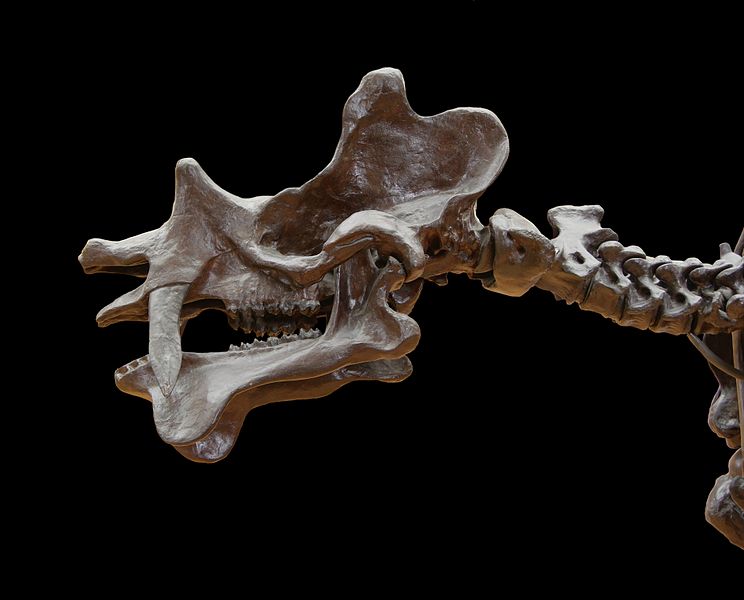
Guest Post: Sun, Sea, & Sauropods
4 April 2013
I grew up in L.A., but 25 years ago I sold my car and moved to Paris. I’ve had few regrets since, although I do return every year to see my old friends. Each visit reminds me that Angelenos don’t have much to be proud of, especially when they have to sit in traffic for hours to get to those places that still are worthwhile (like the excellent restaurants.) True, transportation officials are currently widening the San Diego Freeway at a cost of 1 billion dollars, but the project seems to promise little more than an increase in drivers’ choices of what lanes they want to be stuck in.
More »
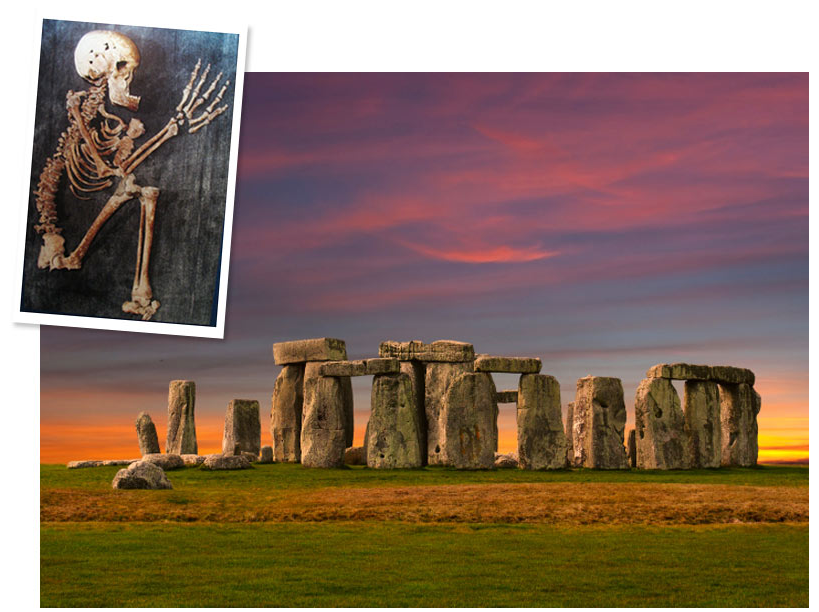
Stonehenge Site of First 'Rock' Concert
1 April 2013
Most musicologists date the beginning of rock 'n' roll to the 1950s, when records by Elvis Presley, Fats Domino, and Jerry Lee Lewis exploded onto the charts. But an interdisciplinary research team working at Stonehenge, the iconic megalithic monument in south England, claims to have found much earlier evidence of rock music—or at least large gatherings of people interested in hearing loud noise. The find could push the origin of such concerts back thousands of years.
More »
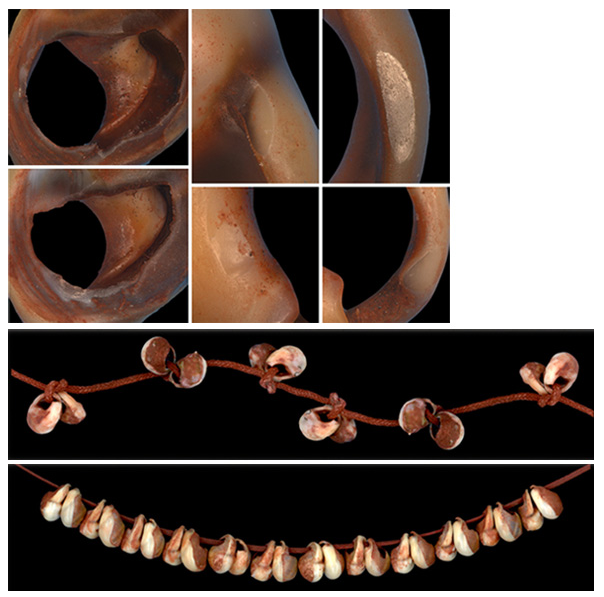
Human Ancestors Were Fashion Conscious
6 March 2013
The 2013 Academy Awards were, as always, as much about making appearances as about making films, as red carpet watchers noted fashion trends and faux pas. Both Jessica Chastain and Naomi Watts wore Armani, although fortunately not the same dress. And Best Supporting Actress Anne Hathaway switched from Valentino to a controversial pale pink Prada at the last minute because her original dress looked too much like someone else's. Of course, no actress would be caught dead wearing the same style 2 years in a row. A new study of ancient beaded jewelry from a South African cave finds that ancient humans were no different, avoiding outdated styles as early as 75,000 years ago.
More »
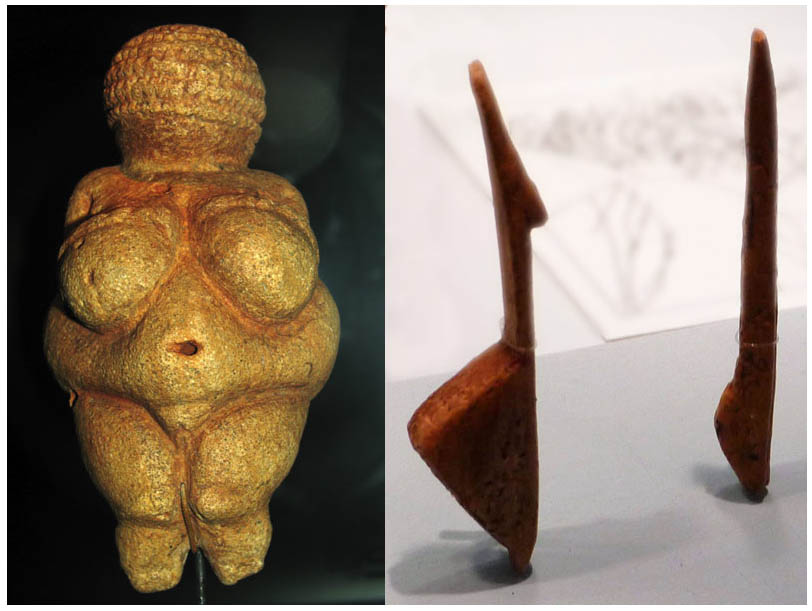
Seeking Meaning in the Earliest Female Nudes
27 February 2013
LONDON—About 35,000 years ago, prehistoric artists across Europe suddenly discovered the female form—and the art world has never been the same. The explosion of voluptuous female figurines sculpted out of limestone, ivory, and clay directly inspired Picasso and Matisse. Researchers have debated the figurines' meaning for decades. Now, two scientists think they have the answer. Presenting their work here last week at the European Palaeolithic Conference, they claimed that the objects started off as celebrations of the female form, then later became symbols that tied together a growing human society.
More »
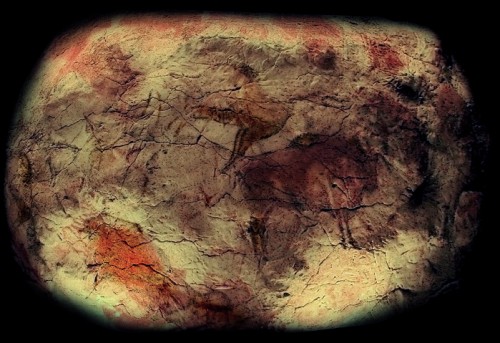
Looking for Moderns in All the Wrong Places
21 February 2013
When the British Museum puts together an exhibition of more than 100 pieces of prehistoric art from all over Europe, stretching back nearly 40,000 years, you want to go. And so I did, making the rounds of this spectacular show the day after its opening on February 7. Youíve got until May 26 to see it yourself, and itís as good an excuse as any to visit London and maybe even catch a glimpse of William and Kate while youíre there.
More »

'Language Gene' More Active in Young Girls Than Boys
19 February 2013
Despite recent progress toward sexual equality, it's still a man's world in many ways. But numerous studies show that when it comes to language, girls start off with better skills than boys. Now, scientists studying a gene linked to the evolution of vocalizations and language have for the first time found clear sex differences in its activity in both rodents and humans, with the gene making more of its protein in girls. But some researchers caution against drawing too many conclusions about the gene's role in human and animal communication from this study.
More »
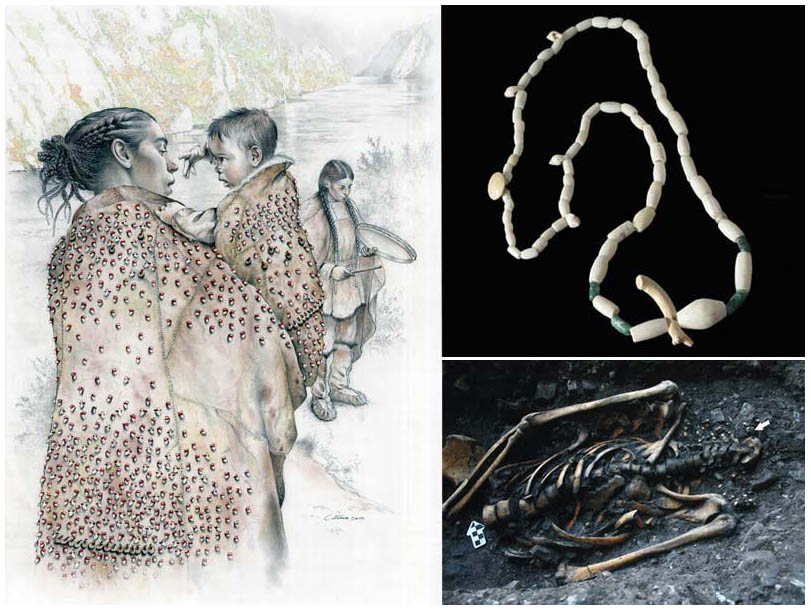
Ancient Foragers and Farmers Hit It Off
11 February 2013
Perhaps there was peace in the valley, after all. Thousands of years ago, foragers and early farmers in the Balkans lived in peaceful coexistence, according to a new study of skeletal remains. But this cozy picture, which includes cultural exchange and also apparently intermating, may not apply to the spread of farming everywhere, other researchers caution.
More »
Timbuktu Manuscripts Apparently Escaped Burning
30 January 2013
In contrast to horrific reports from Timbuktu earlier this week, an important library of medieval texts is still standing, and many manuscripts are thought to have survived the hasty retreat of Islamic militants, researchers and journalists say.
More »
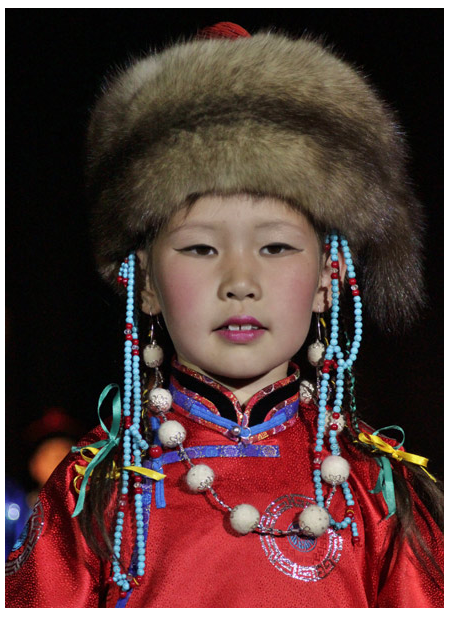
How to Survive a Siberian Winter
28 January 2013
CAMBRIDGE, UNITED KINGDOM—Siberia may not be everyone's idea of a tourist destination, but it has been home to humans for tens of thousands of years. Now a new study of indigenous Siberian peoples presented here earlier this month at a meeting on human evolution reveals how natural selection helped people adapt to the frigid north. The findings also show that different living populations adapted in somewhat different ways.
More »
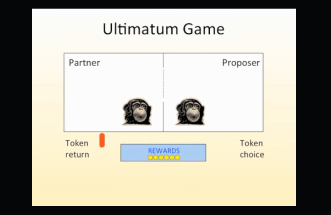
Can Chimps Learn to Play Fair?
14 January 2013
f you give a mouse a cookie, will it give you something back? Researchers have long wondered whether animals play fair. A new study in chimps suggests that they do, although some skeptics are not convinced.
More »
Are Crows Mind Readers ... Or Just Stressed Out?
10 January 2013
Are crows mind readers? Recent studies have suggested that the birds hide food because they think others will steal it -- a complex intuition that has been seen in only a select few creatures. Some critics have suggested that the birds might simply be stressed out, but new research reveals that crows may be gifted after all.
More »
The Earliest Known Dino?
4 December 2012
A team of paleontologists thinks it may have identified the earliest known dinosaur—a creature no bigger than a Labrador retriever that lived about 243 million years ago. That's at least 10 million years earlier than the oldest known dinos and could change researchers' views of how they evolved. But some scientists, including the study's authors, caution that the fossils could instead represent a close dino relative.
More »
November 30:
Michael Balter talks with John Batchelor about why our brains are so big and how Einstein's unusual brain structure might help explain his genius.
More »
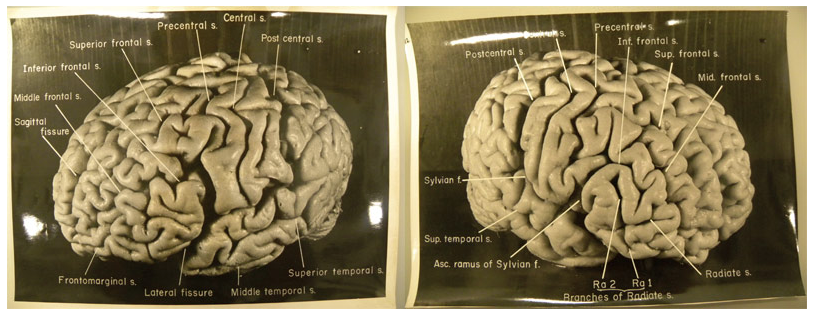
Why Einstein Was a Genius
15 November 2012
Albert Einstein is widely regarded as a genius, but how did he get that way? Many researchers have assumed that it took a very special brain to come up with the theory of relativity and other stunning insights that form the foundation of modern physics. A study of 14 newly discovered photographs of Einstein's brain, which was preserved for study after his death, concludes that the brain was indeed highly unusual in many ways. But researchers still don't know exactly how the brain's extra folds and convolutions translated into Einstein's amazing abilities.
More »

November 9:
Michael Balter talks with John Batchelor about Neandertals and whether they really buried their dead.
More »
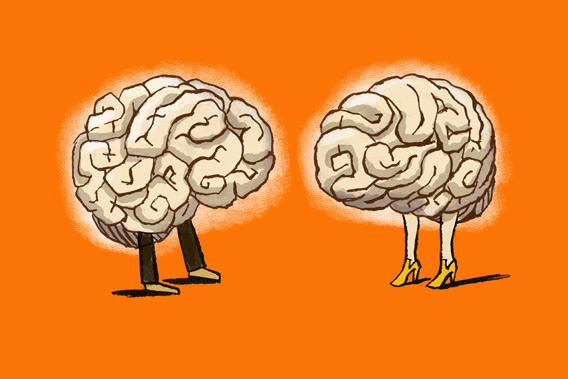
Why Are Our Brains So Ridiculously Big?
26 October 2012
“What would you do with a brain if you had one?” Dorothy’s question to the Scarecrow in The Wizard of Oz elicited one of the movie’s most delightful songs, in which her straw-filled friend assured her that, among other things, he could “think of things I’d never thunk before.” But the Scarecrow seemed to do quite well without one, thus avoiding the high energy costs of fueling and cooling a human brain—which, with an average volume of about 1,400 cubic centimeters, is humongous relative to our body size. Illustration by Robert Neubecker.
More »
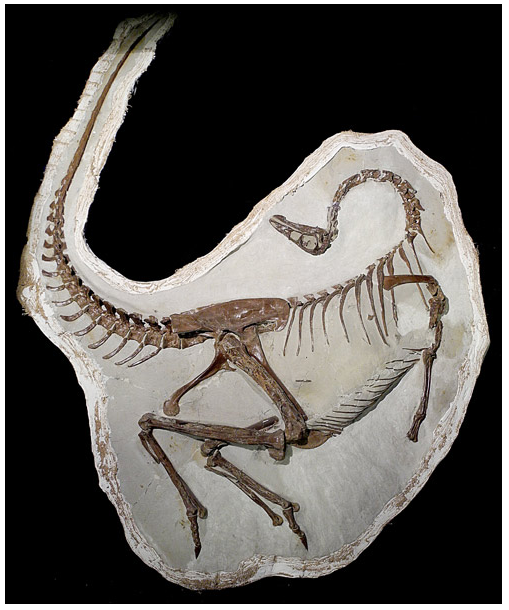
Dinosaurs Sprouted Wings Earlier Than Previously Thought
25 October 2012
Dinosaurs still walk—and fly—among us: We call them birds. Most paleontologists think birds descended from a group of winged dinosaurs, and thus dinos never went completely extinct. But where did the wings come from? New discoveries from Canada suggest that both wings and feathers arose earlier in dinosaur evolution than previously thought, possibly to attract members of the opposite sex or to protect hatching baby dinos.
More »
Live Chat: How Humans Were Neandertals?
24 October 2012
Our views of Neandertals have swung wildly over the years. Scientists once regarded them as dimwitted brutes—we still use the epithet "Neandertal" to refer to clueless, sexist guys—but recent research shows that they were skilled toolmakers, had a complex social organization, and made sophisticated use of the caves and other spaces they lived in. Still, human evolution experts continue to debate how similar Neandertals were to Homo sapiens in their cognitive and symbolic capacities: Did they have language? Did they bury their dead? Did they make art? Just how "human" were they?
Join us for a live chat on how we compare to our closest evolutionary cousins at 3 p.m. EDT on Thursday, 25 October, on this page. You can leave your questions in the comment box below before the chat starts. The full text of the chat will be archived on this page.
More »
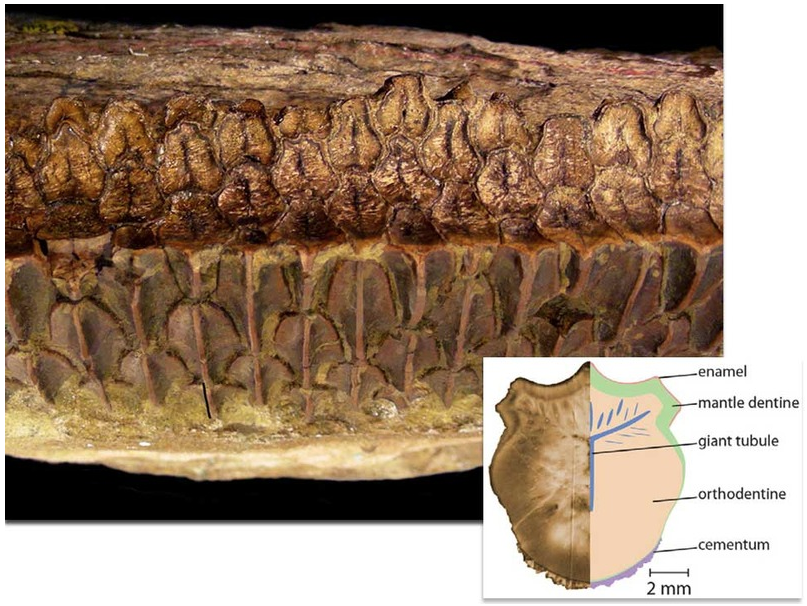
Cows of the Cretaceous
4 October 2012
The hadrosaurids, or duck-billed dinosaurs, were among the most successful plant-eating dinos to roam the earth. They ranged widely in North America, Europe, and Asia during the Upper Cretaceous period, about 100 million years ago to 65 million years ago. What was the secret to their success? A new study of hadrosaurid teeth finds that they were among the most sophisticated chompers ever known, capable of grinding and slicing like a prehistoric Veg-O-Matic.
More »
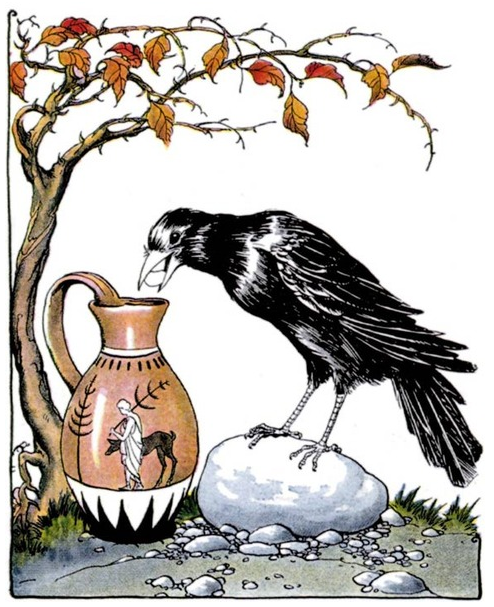
The Wisdom of Not Being Too Rational
25 July 2012
Many children (and adults) have heard Aesop's fable about the crow and the pitcher. A thirsty crow comes across a pitcher partly filled with water but can't reach the water with his beak. So he keeps dropping pebbles into the pitcher until the water level rises high enough. A new study finds that both young children and members of the crow family are good at solving this problem, but children appear to learn it in a very different ways from birds.
More »
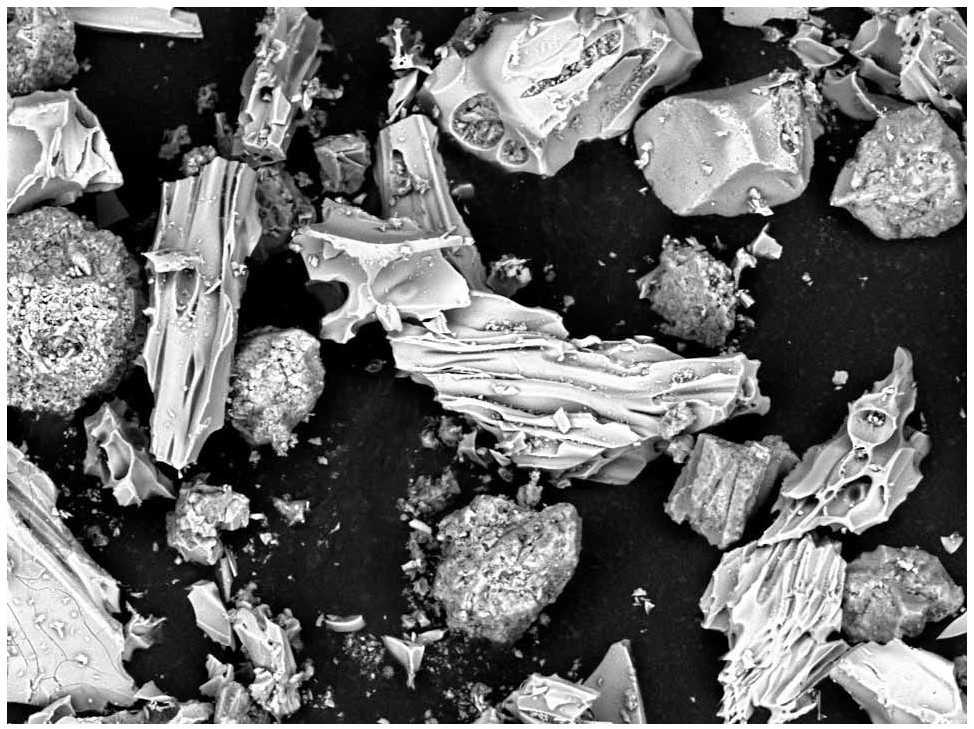
Neandertals Didn't Bite the Volcanic Dust
23 July 2012
About 40,000 years ago, a huge volcanic eruption west of what is now Naples, Italy, showered ash over much of central and Eastern Europe. Some researchers have suggested that this super-eruption, combined with a sharp cold spell that hit the Northern Hemisphere at the same time, created a "volcanic winter" that did in the Neandertals. But a new study of microscopic particles of volcanic glass left behind by the explosion concludes that the eruption happened after the Neandertals were already mostly gone, putting the blame for their extinction on competition with modern humans. More »
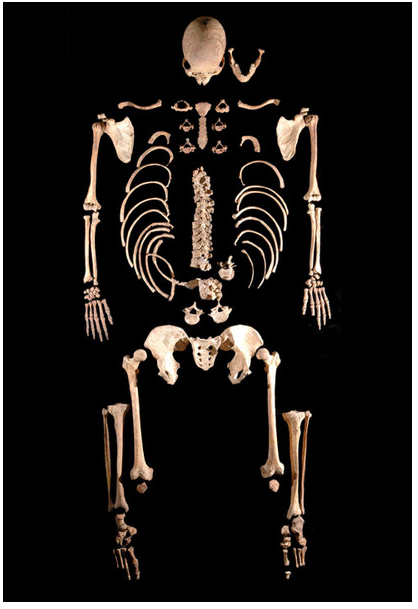
Ancient Hunter-Gatherers Kept in Touch
28 June 2012
Until about 8500 years ago, Europe was populated by nomadic hunter-gatherers who hunted, fished, and ate wild plants. Then, the farming way of life swept into the continent from its origins in the Near East, including modern-day Turkey. Within 3000 years most of the hunter-gatherers had disappeared. Little is known about these early Europeans. But a new genetic analysis of two 8000-year-old skeletons from Spain suggests that they might have been a remarkably cohesive population both genetically and culturally—a conclusion that other researchers find intriguing but possibly premature. More »
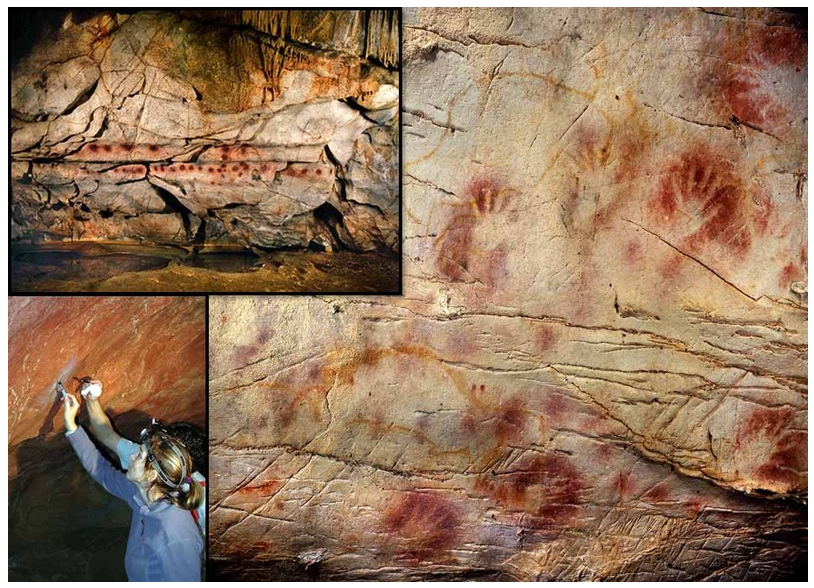
Did Neandertals Paint Early Cave Art?
14 June 2012
The basic questions about early European cave art—who made it and whether they developed artistic talent swiftly or slowly—were thought by many researchers to have been settled long ago: Modern humans made the paintings, crafting brilliant artworks almost as soon as they entered Europe from Africa. More »
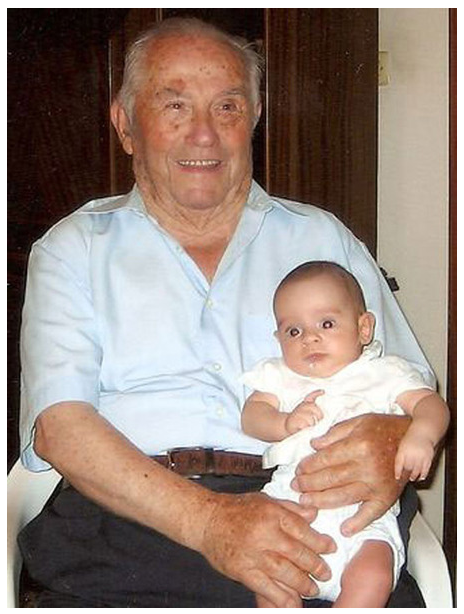
Aging Is Recorded in Our Genes
11 June 2012
"The great secret that all old people share is that you really haven't changed," wrote novelist Doris Lessing. "Your body changes, but you don't change at all." From a genetic point of view, there is a lot of truth in that statement: As we age, the core of our biological being—the sequence of our DNA, which makes up our genes—remains the same. Yet recent research suggests that more subtle chemical changes to our DNA occur as we age. Now, a comparison of the DNA of a newborn baby with that of a centenarian shows that the scope of these changes can be dramatic, and they may help explain why our risk of cancer and other diseases increases as we get older. More »
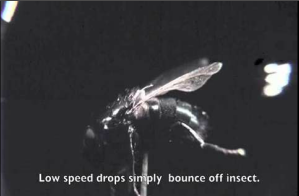
Raindrops Don't Swat Down Mosquitoes
4 June 2012
A mosquito buzzes its way toward an open window, its unsuspecting victim sleeping peacefully in bed. Suddenly, a raindrop weighing about 50 times as much as the mosquito plummets straight down toward the insect. The drop should have the impact of a bus running over a human and drive the mosquito downward at a force up to 300 times that of gravity. More »
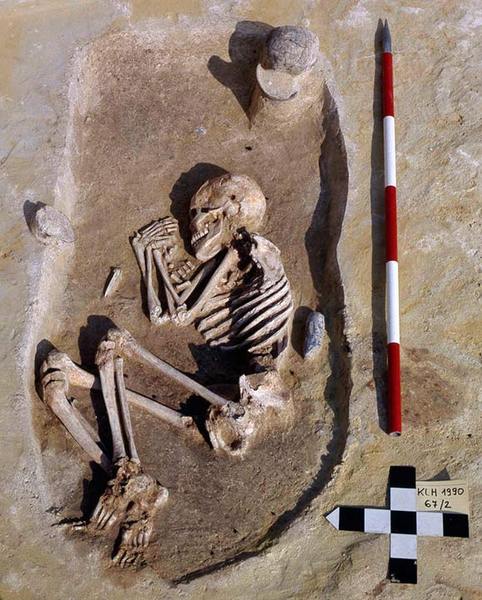
Occupy the Neolithic
28 May 2012
Even the most democratic societies are rife with social and economic inequalities, as the current tension between the poorer "99%" and the richest "1%" vividly illustrates. But just how early in human events such social hierarchies became entrenched has been a matter of debate. A new study of skeletons from prehistoric farming communities across Europe suggests that hereditary inequality was an early feature, going back more than 7000 years ago. More »
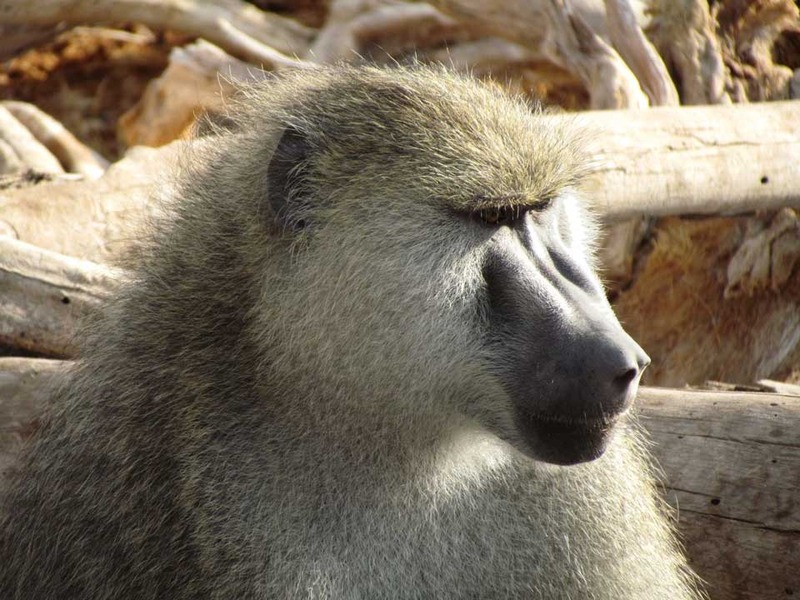
Life at the Top Can Be Good for Your Health
21 May 2012
Many studies in humans and animals suggest that chronic stress is bad for one's health, in part because it suppresses the immune system. But nearly 30 years of data on wild baboons shows that top-ranking males, despite showing signs of increased stress, recover more quickly than low-ranking baboons from wounds and illness. The results may help explain why some people escape from the negative effects of stress while others do not. More »
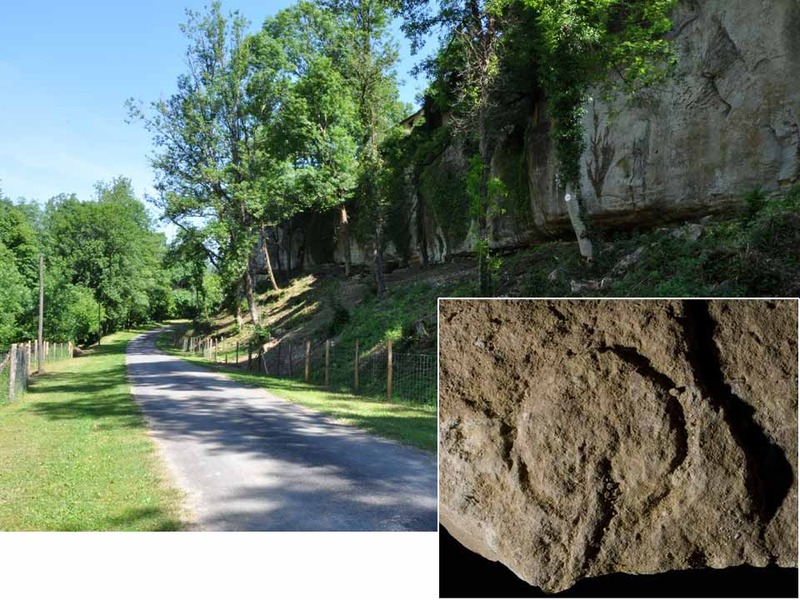
Engravings of Femaile Genitalia May Be World's Oldest Cave Art
14 May 2012
Since their discovery in 1994, the spectacular paintings of lions, rhinos, and other animals in southern France's Chauvet Cave have stood out as the oldest known cave art, clocking in at about 37,000 years old. But there have been occasional sightings of other cave art that is equally ancient, although its dating has been more uncertain. Now a team working at another site in the south of France claims to have discovered what appear to be engravings of female genitalia that are as old as or older than Chauvet, possibly making them the world's most ancient cave art. More »
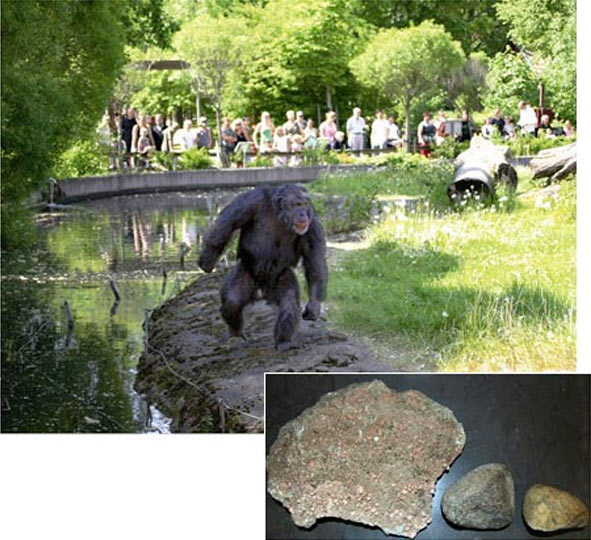
Stone-Throwing Chimp Is Back -- And This Time It's Personal
9 May 2012
Three years ago, a stone-throwing chimpanzee named Santino jolted the research community by providing some of the strongest evidence yet that nonhumans could plan ahead. Santino, a resident of the Furuvik Zoo in Gävle, Sweden, calmly gathered stones in the mornings and put them into neat piles, apparently saving them to hurl at visitors when the zoo opened as part of angry and aggressive "dominance displays. More »
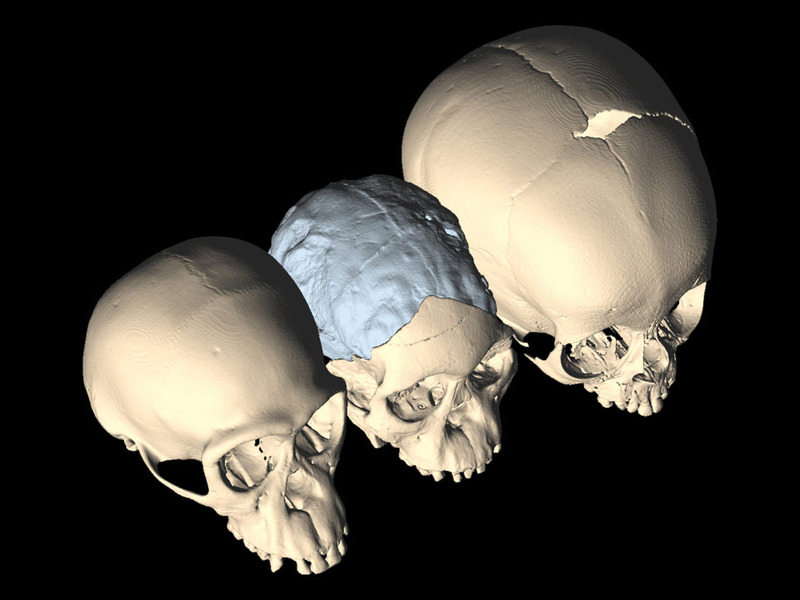
Infants' Flexible Heads Stretch Back Millions of Years
7 May 2012
It isn't easy being born. Human babies have big heads, which makes their passage through the birth canal a challenge for both them and their mothers. Fortunately, an infant's skull can change shape as it squeezes through because its cranial bones don't entirely fuse together for at least 2 years after birth. A new study shows that this delayed fusion was also a feature of early humans who lived nearly 3 million years ago, even though their heads were much smaller than ours. One possible explanation is that walking upright created new obstetrical challenges even for small-brained human ancestors. More »
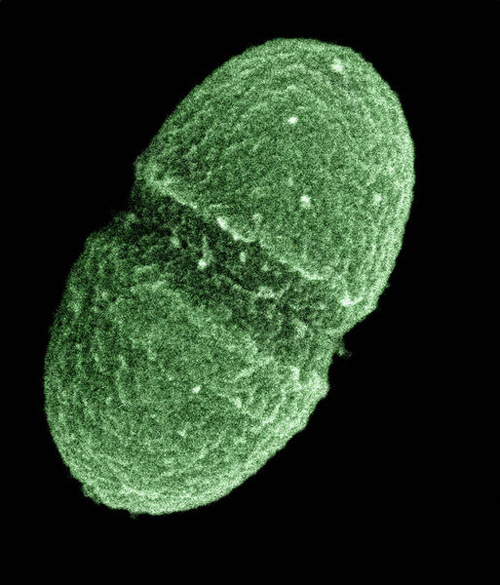
International Human Microbe Program Looks Ahead
22 March 2012
We are not alone. Every human being is teeming with billions of microbes, which inhabit our guts, our skin, our mouths and noses, and our reproductive tracts. Scientists call this the microbiome, and over the past several years the International Human Microbiome Consortium has mounted an intense research effort to understand its crucial role in disease and health. More »
Do Animals Think Human Thoughts?
21 March 2012
It seems that hardly a week goes by without a new report about animals performing marvelous feats we once thought only humans could do: Crows make tools, chimpanzees seem to mourn their dead, and rats supposedly empathize with one another’s pain. Do these findings suggest close similarities between human and animal minds? Or are there alternative ways of explaining the clever things that animals do, without invoking human-like cognition? More »

Trees Survived Ice Age Chill in Scandinavia
1 March 2012
The last ice age hit northern Europe hard. At its height, about 20,000 to 25,000 years ago, glaciers up to 3000 meters thick covered some 6 million square kilometers of Scandinavia, the United Kingdom, Germany, Poland, and western Russia. It's hard to believe that any trees could survive this onslaught, and most scientists assumed that Scandinavia in particular was treeless until it thawed out about 9000 years ago. Now analysis of ancient DNA has found evidence that conifer trees like pine and spruce were alive and well in Norway as early as 20,000 years ago. The findings suggest that trees may migrate slower than thought when faced with climate warming, which could have important implications for models predicting the effects of current global warming. More »
Could a Bit More Rain Have Saved the Mayas?
23 February 2012
For more than 500 years, the Maya kings ruled the New World's richest and most advanced civilization. But then, around 800 C.E., the Maya empire began to collapse and its kings soon disappeared; by 1000 C.E., most of its great cities and temples lay in ruins. What happened? In recent years, scientists have increasingly blamed a series of droughts for the calamity, but the evidence has been ambiguous. A new study concludes that drought did indeed play an important role, but the actual decrease in rainfall was relatively modest.
More »

A Mystery Meteorite From the House of Sting
13 February 2012
When the English musician Sting and his wife Trudie Styler bought the Lake House estate in the United Kingdom's rural Wiltshire in the early 1990s, they got a lot for their money: A beautiful 16th century home and 26 hectares of land on the River Avon, just a stone's throw from Stonehenge. The house has been featured in Architectural Digest, and Styler was inspired by the idyllic farm setting to write The Lake House Cookbook. More »
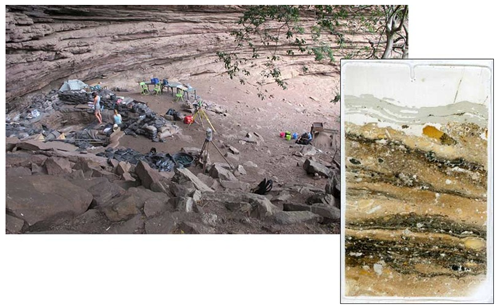
Earliest Human Beds Found in South Africa
8 December 2011
"Early to bed and early to rise, makes a man healthy, wealthy, and wise," wrote Benjamin Franklin in his Poor Richard's Almanack. That may have held true a couple of hundred years ago, but when it comes to our ancient human ancestors, researchers don't know much about how—or even where—they slept. Now a team working in South Africa claims to have found the earliest known sleeping mats, made of plant material and dated up to 77,000 years ago—50,000 years earlier than previous evidence for human bedding. These early mattresses apparently were even specially prepared to be resistant to mosquitoes and other insects. More »
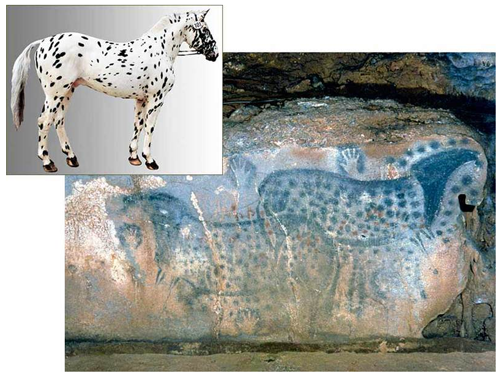
Was the Spotted Horse an Imaginary Creature?
7 November 2011
About 25,000 years ago, humans began painting a curious creature on the walls of European caves. Among the rhinos, wild cattle, and other animals, they sketched a white horse with black spots. Although such horses are popular breeds today, scientists didn't think they existed before humans domesticated the species about 5000 years ago. Now, a new study of prehistoric horse DNA concludes that spotted horses did indeed roam ancient Europe, suggesting that early artists may have been reproducing what they saw rather than creating imaginary creatures. More »
New German-Israeli Center Will Research Archaeology and Anthropology
6 January 2012
When it comes to human evolution, Europe and the Near East are crucial places: Europe has the first cave art, and the Near East has the first sightings of modern humans out of Africa, for example. Now a leading scientific body, the Munich-based Max Planck Society, is teaming up with Israel's Weizmann Institute of Science to create a joint center devoted to studying archaeology and human evolution, to be based in both Rehovot, Israel, and Leipzig, Germany. More »